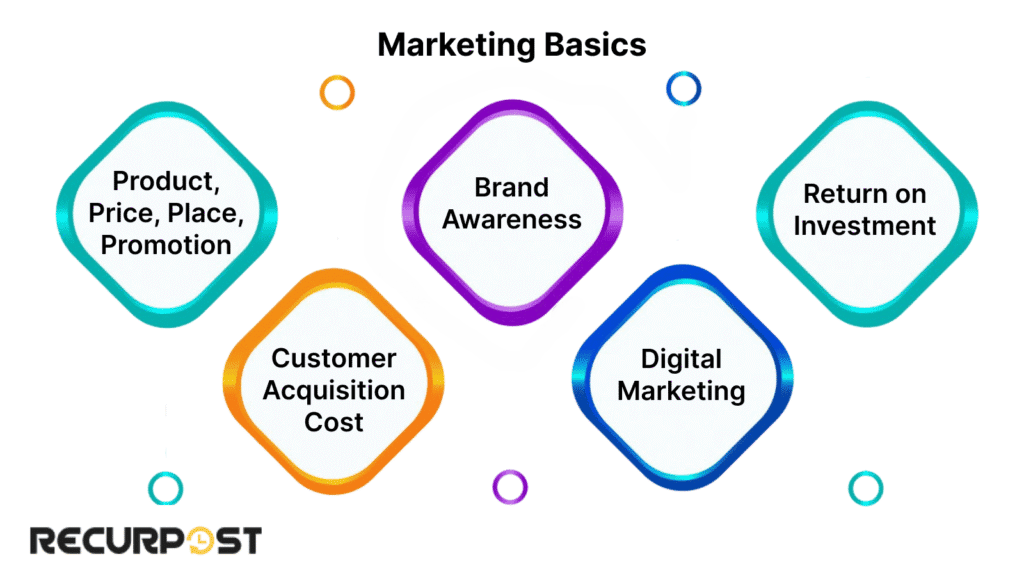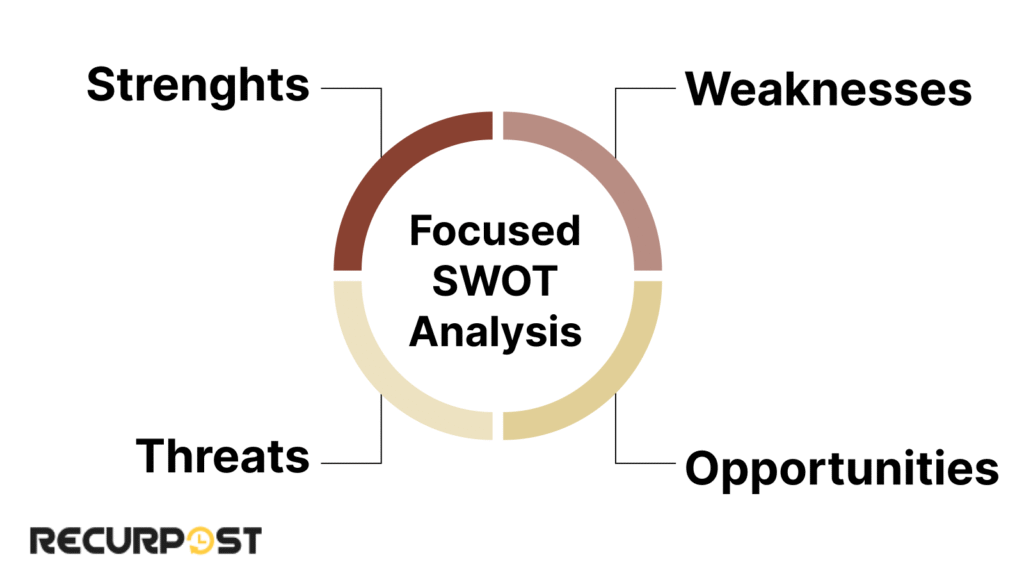Marketing Plan for Small Business: Your Roadmap to Measurable Growth
Many small business owners need a marketing plan for their small business to attract customers and increase brand awareness. A business marketing plan links directly to the overall business plan and mission statement. This small business marketing plan guide shows how to turn business goals into measurable marketing objectives that drive results.
Unlike guides written for large companies with unlimited resources, this marketing plan for a small business works with any budget. It covers setting clear goals, defining the target audience, and selecting marketing channels like social media marketing, email campaigns, and local events. These steps remove guesswork and help build a successful business marketing plan.
This guide explains how to measure conversion rates, track return on investment (ROI), and refine tactics over time. Each section builds into an actionable roadmap for growth. A marketing plan for small business helps your company stand out, reach new customers, and sustain measurable growth.
Basics for Building a Marketing Plan for Small Business

Before creating a marketing plan for small business, owners need to know the basics. Marketing promotes products or services to attract and retain customers. Success comes from building brand awareness and customer relationships, not just closing sales.
The marketing mix includes four parts: Product (what you sell), Price (what you charge), Place (where you sell), and Promotion (how you communicate). A strong small business marketing plan balances these factors to meet customer needs and maintain profit.
Customer acquisition cost shows how much it takes to win a customer. Customer lifetime value (CLV) measures revenue per customer over time. When CLV exceeds acquisition cost, a small business marketing strategy becomes sustainable.
Brand awareness measures how easily potential customers recognize a company. Word-of-mouth marketing happens when satisfied customers recommend your business. Both cost less than paid ads and often convert at higher rates.
Digital marketing includes websites, social media marketing, and email campaigns. Traditional marketing uses offline methods like print ads, radio, or direct mail. Most marketing plans for small businesses combine both, based on the target audience.
Return on investment (ROI) tracks revenue from each marketing dollar. A positive ROI means campaigns pay off. Measuring ROI by channel helps refine a marketing plan for small business and decide where to spend the budget
Step 1: Business Goals and Objectives in a Marketing Plan for Small Business

Begin by listing clear business goals and marketing objectives in your marketing plan for small business. Set revenue targets and profit margins to guide activities. A small business marketing plan works best with 3–5 measurable goals.
Align marketing objectives with overall business goals. For example, aim to increase sales by 20% in 12 months or add 500 new customers. This keeps the business marketing plan tied to the target market and customer needs.
Use the SMART framework: make goals specific, measurable, attainable, relevant, and time-bound. Each objective in a marketing plan for small business should be measurable and trackable.
Step 2: Conduct Lean Market Research

Market research defines the target audience and their buying decisions. Use surveys, interviews, and focus groups to gather direct feedback from potential customers. This step strengthens any marketing plan for small Business.
Run a competitive analysis of 3–5 rivals. Study their marketing channels, pricing strategy, and messaging to see where a small business marketing plan can stand out.
Scan industry trends with Google Trends and free reports. Allocate about 10–15% of the marketing budget to market research for reliable data that supports a business marketing plan.
Tip: Reserve 20% of your research budget for one-on-one customer interviews. They uncover insights no report can match.
Step 3: Build Detailed Customer Personas

Create 2–4 customer personas to represent the target audience in a marketing plan for small business. Each profile should list demographics, pain points, goals, and preferred marketing channels. These personas guide business marketing messages and keep campaigns focused.
Give each persona a name, short backstory, and “day in the life.” List challenges and how your company solves them. These profiles drive tailored content marketing, social media marketing, and email marketing inside a small business marketing plan.
A clear marketing plan for small business shows how to overcome them with consistent posting and channel adjustments.
Struggling with improving your social presence? Here’s how to tackle the most common social media marketing challenges and issues head-on.
Tip: Use survey data and interviews from Step 2 to fill in real quotes. This adds authenticity and highlights competitive advantage.
Step 4: Perform a Focused SWOT Analysis

A SWOT analysis maps Strengths, Weaknesses, Opportunities, and Threats within a marketing plan for small business. List internal resources and weak spots. Track external forces, including market trends and competitor threats.
Strengths may include a clear value proposition or strong customer service. Weaknesses could be a tight budget or a small team. Opportunities may involve untapped marketing channels or niche segments.
Threats range from new rivals to shifting regulations. Rank each factor by impact and effort with an effort-impact matrix. This view of competitive advantage keeps the small business marketing plan on track.
Step 5: Craft a Clear Value Proposition

A value proposition explains why customers pick your company over competitors. It highlights the problem solved and the benefit delivered, such as lower cost or faster service. This core message drives all business marketing campaigns in a marketing plan for small business.
Use this simple formula inside a small business marketing plan:
- The problem solved by the product or service
- Benefit delivered (make it measurable when possible)
- Unique feature that sets your company apart
Example: “Get custom coaching plans in 48 hours,” instead of “We offer coaching.” A strong value proposition powers marketing success and supports competitive advantage in a marketing plan for small business.
Tip: Test the draft with five potential customers. If they repeat it back, it’s ready for the marketing plan.
Step 6: Select 3–5 High-Impact Marketing Channels

Match each customer persona with their preferred marketing channels inside a marketing plan for small business. Options include social media marketing, email marketing, content marketing, and online advertising. Use direct mail and local events as additional distribution channels.
Focus on channels where your target audience spends the most time. Use LinkedIn for coaches and Facebook ads for local retailers. This targeted approach maximizes marketing efforts and ROI.
Allocate time and budget based on expected impact. Track performance with metrics like click-through rate and cost per lead. Adjust the mix quarterly to keep the marketing plan for small business effective and measurable.
Step 7: Allocate Marketing Budget & Internal Resources

Set a marketing budget as a percentage of revenue in a marketing plan for small business. New firms often spend 20–30% of projected revenue, growth-stage companies 12–20%, and established small businesses 7–12%. Add financial projections to align with revenue targets and profit margins.
Break the budget into these key areas in a small business marketing plan:
- Digital ads: 30%
- Content creation: 20%
- Email marketing and social media marketing: 15%
- Tools and software: 15%
- Analytics and reporting: 10%
- Contingency fund: 10%
Use existing internal resources, team time, content, and free tools before adding new costs. Adjust numbers as key metrics come in to keep the marketing plan for small businesses accurate and on track
Tip: Set aside at least 10% of the marketing budget for testing new marketing tactics and channels.
Step 8: Develop a Detailed Content & Campaign Calendar

Organize all activities in a content calendar or marketing plan template inside a Marketing Plan for Small Business. Schedule blog posts, social media posts, email campaigns, and online advertising. Assign task owners and prepare marketing materials like images and guides.
Plan marketing campaigns around product launches, seasonal events, or offers. Track deadlines, distribution channels, and results with a spreadsheet or free template. This schedule keeps the marketing team aligned and ensures consistent marketing efforts in a small business marketing plan.
Step 9: Implement Tracking & Analytics

Set up measurement tools for each marketing channel in a Marketing Plan for Small Business. Use Google Analytics to track website traffic and conversion rates. Add UTM parameters to email and social media links for accurate attribution.
Track customer acquisition cost (CAC), return on ad spend (ROAS), and customer lifetime value (CLV). Use CRM data to check lead quality and progress toward sales goals. Review weekly to confirm marketing objectives are met.
Build a dashboard or report template. Compare spending against the marketing budget and revenue targets. This data-driven view sharpens tactics, supports a small business marketing plan, and improves marketing success
Step 10: Launch, Monitor, & Optimize

Launch marketing campaigns using the content calendar. In your Marketing Plan for Small Business. Prepare marketing materials in advance: email templates, social media posts, ad creatives, and direct mail pieces.
Monitor each marketing channel daily during launch week. Track click-through rate, conversion rate, and cost per lead. Compare results against marketing objectives and revenue targets to measure progress.
Hold weekly check-ins with the marketing team to review data. Adjust tactics: pause weak ads, boost high-ROI channels, or refine messages. This ongoing cycle of review keeps the small business marketing strategy aligned with the marketing plan for small business.
Tip: Use A/B tests for headlines and calls to action. Small changes often drive big improvements in marketing success.
Bonus: Templates, Checklists & Tools
Grab a free marketing plan template to start building a marketing plan for small business. It includes an executive summary, marketing objectives, and a marketing mix overview. This template saves time and provides structure.
Use a persona worksheet and SWOT matrix checklist to complete customer profiles and competitive analysis. A simple content calendar tracks blog posts, social media posts, and email marketing. These marketing materials keep the marketing team aligned.
Try tools like RecurPost for social media scheduling, Google Analytics for search engine optimization (SEO) insights, and Trello for task management software. A cost tracker manages the marketing budget and financial projections. These resources support continued success and drive measurable marketing success in a small business marketing plan.
Conclusion & Call to Action
This Marketing Plan for Small Business guide presents each step clearly and actionably. From marketing objectives and market research to campaign launches and performance tracking, every phase builds on the last. A solid small business marketing plan turns sales growth and market share goals into a structured path forward.
Consistency and review are essential. Follow the content calendar, monitor results with Google Analytics, and adjust marketing channels or budget when needed. Quarterly reviews and small tests keep the business marketing plan aligned with customer needs and financial projections.
Put this marketing plan for small business into action today. Download the free marketing plan template, define business goals, and launch your first 90-day campaign. With a clear roadmap and the right tools, attracting customers and hitting revenue targets becomes achievable.
Frequently Asked Questions
1. How do I choose the right pricing strategy?
Look at costs, competitor pricing, and customer willingness to pay. Test small price changes and track profit margins to guide your business marketing plan.
2. What low-cost marketing tactics work for small businesses?
Use email marketing, organic social media posts, and referral programs. Free tools like Google My Business make a small business marketing plan affordable.
3. How do I write an executive summary for my plan?
Summarize business goals, target market, marketing tactics, budget, and expected ROI on one page. A clear executive summary strengthens a marketing plan for small business.
4. Can I mix offline and online marketing?
Yes. Pair local events, flyers, or direct mail with social media ads and email campaigns to reach a wider target audience.
5. How long before my marketing plan shows results?
Expect website traffic gains in 1–2 months and sales growth in 3–6 months, depending on your marketing budget and chosen channels.
6. Is this plan valid for a solo entrepreneur?
Absolutely. Scale each step to fit one person. Focus on your strongest marketing channels and use free or low-cost tools to run a lean marketing plan for small business.
7. How often should I update my marketing materials?
Review marketing messages and creative assets quarterly or whenever customer feedback or market trends shift. This keeps the small business marketing strategy aligned with audience needs.

As a passionate content writer, I love blending creativity with research to craft compelling narratives that inform, engage, and inspire. With a strong focus on user engagement and brand communication, I create content that resonates with the audience and drives meaningful interactions.




